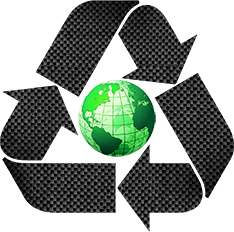By Elizabeth Rosenberg

Senator Cantwell Introduces Carbon Fiber Recycling Act of 2015: A Step Toward a Greener Future
Senator Maria Cantwell from Washington state has taken a bold step in the fight against environmental waste by introducing the Carbon Fiber Recycling Act of 2015. This groundbreaking legislation aims to promote and accelerate the development of carbon fiber recycling technologies, positioning the U.S. as a leader in sustainable materials management.
The bill mandates that the U.S. Department of Energy (DOE) conduct a comprehensive study on the technological feasibility, life cycle analysis, and economic impact of recycled carbon fiber. It also encourages collaboration between the DOE, major industries like automotive and aerospace, and the Composite Recycling Technology Center (CRTC) in Port Angeles. The goal is to create a real-world demonstration project that showcases the potential of recycled carbon fiber in various applications.
As carbon fiber becomes increasingly prevalent in high-performance industries—from electric vehicles to aircraft—its disposal has become a pressing environmental issue. Every year, millions of pounds of carbon fiber composites end up in landfills, contributing to both waste and greenhouse gas emissions. The CRTC plays a crucial role in addressing this problem by transforming discarded materials into new products, such as construction components, energy systems, and even consumer goods.
Recycling carbon fiber isn’t just about reducing waste—it’s a key strategy in lowering carbon footprints. Companies like HJ3 Composite Technologies are already leading the way, ensuring that every scrap of carbon fiber is inspected, repurposed, and reused whenever possible. Their commitment to sustainability aligns with broader industry goals, and they're now looking for more partners to help scale up their efforts.
This initiative highlights the growing recognition that innovation must go hand in hand with responsibility. As the demand for carbon fiber continues to rise, so too does the need for responsible end-of-life solutions. With the right policies and partnerships, the future of carbon fiber could be not only strong but also sustainable.
Key Takeaways:
- Senator Cantwell's Carbon Fiber Recycling Act of 2015 promotes the development of carbon fiber recycling technologies.
- The DOE will assess the technology, life cycle, and economic implications of using recycled carbon fiber.
- Cross-industry collaboration is essential for creating a working demonstration project.
- Carbon fiber waste is a growing environmental concern due to its increasing use across multiple sectors.
- Recycling carbon fiber helps reduce landfill waste and lower carbon dioxide emissions.
- HJ3 Composite Technologies actively recycles carbon fiber and seeks industry partners to expand its efforts.
Industrial Mixer Blender,Blender Industrial,Industrial Blender Mixer,Blender Machine Industrial
wuxi top mixer equipment co.,ltd , https://www.wxtpmixer.com
![<?echo $_SERVER['SERVER_NAME'];?>](/template/twentyseventeen/skin/images/header.jpg)